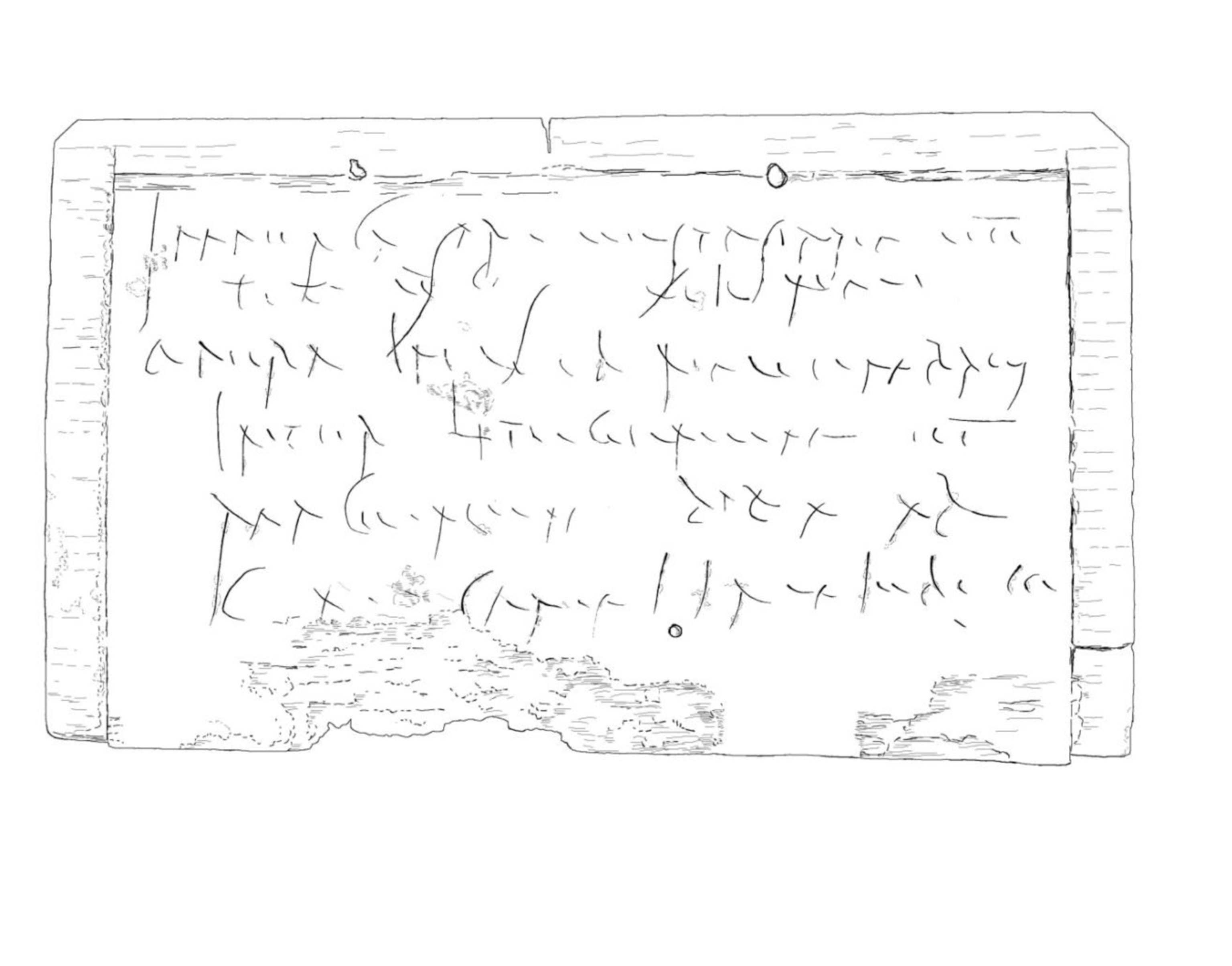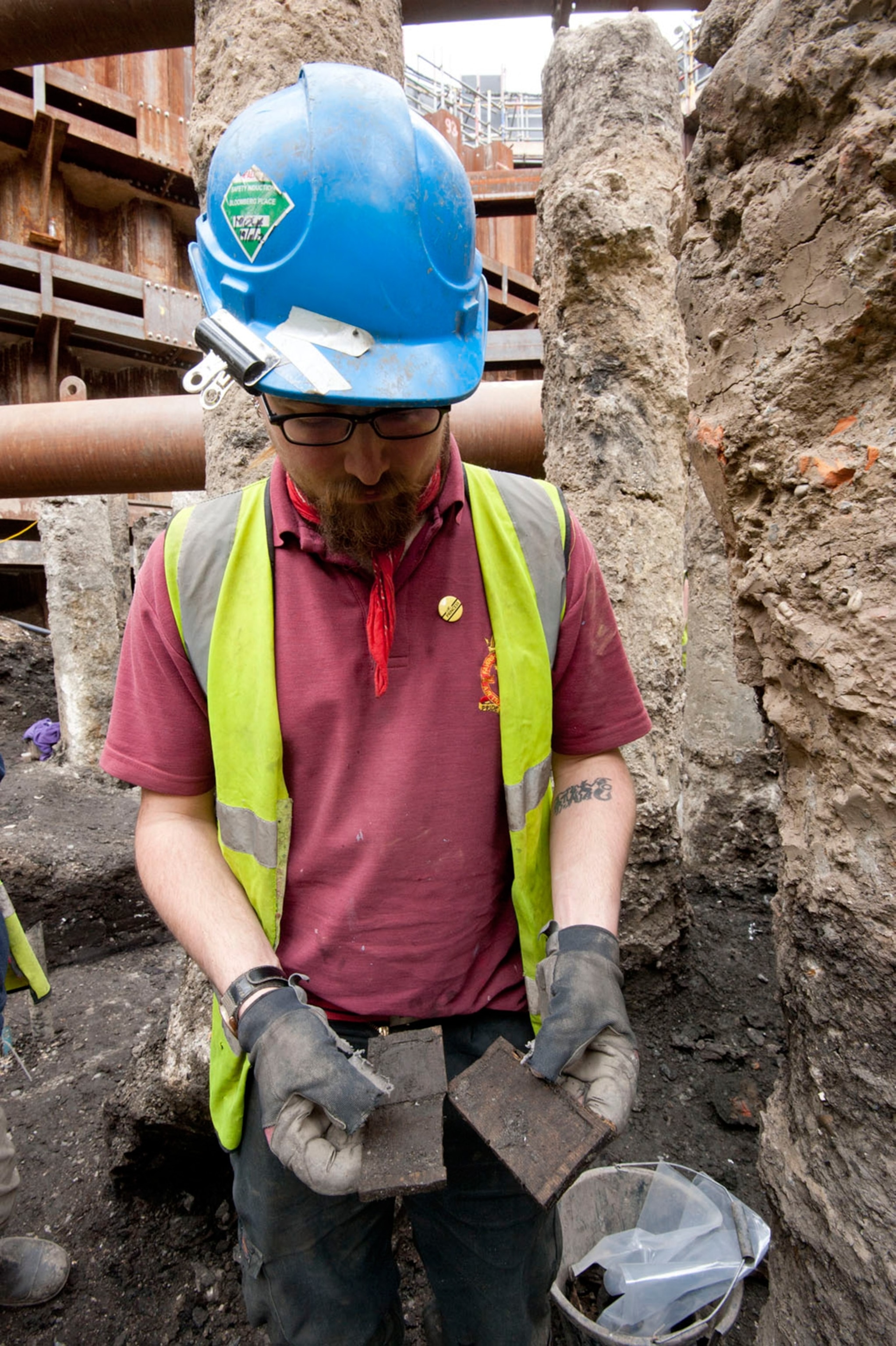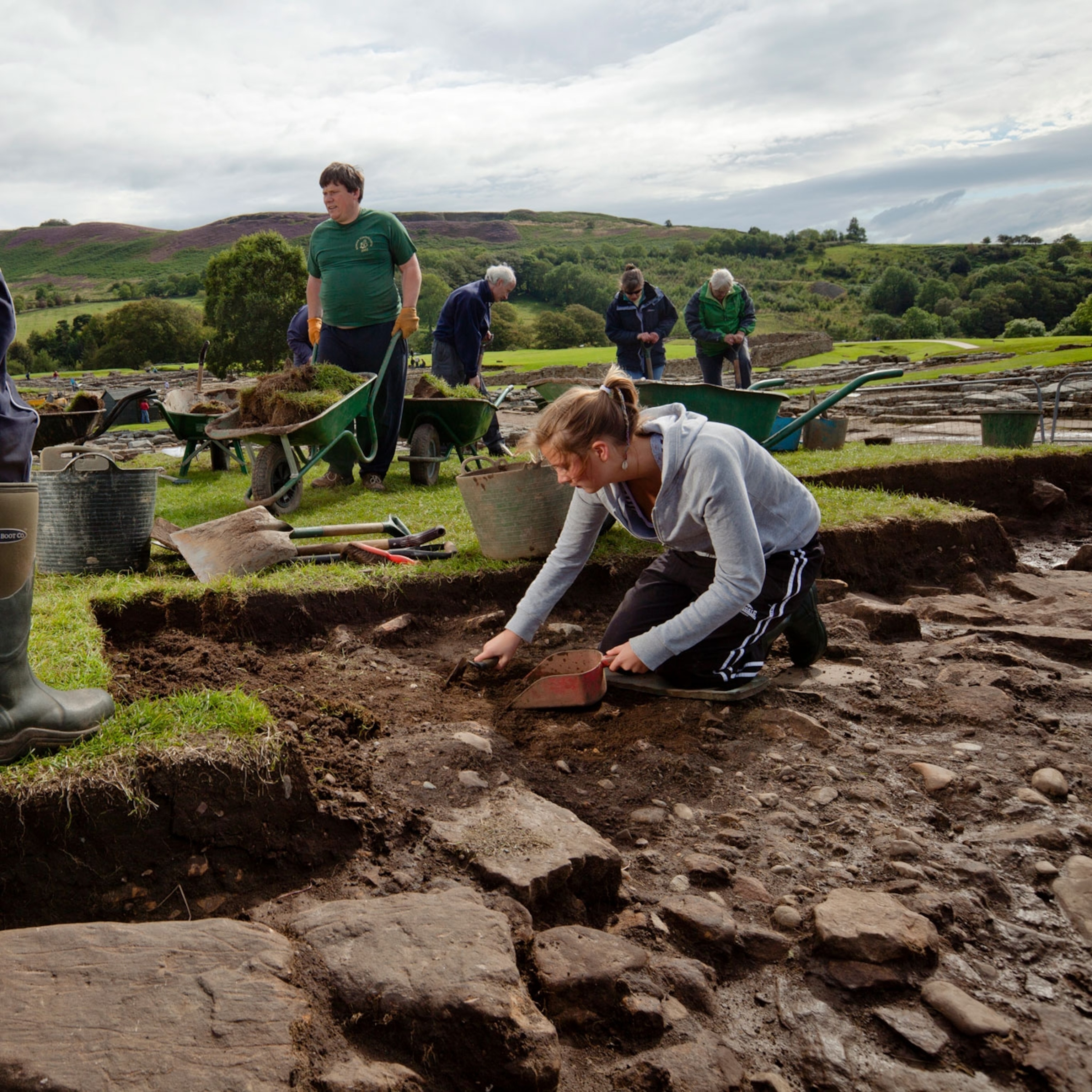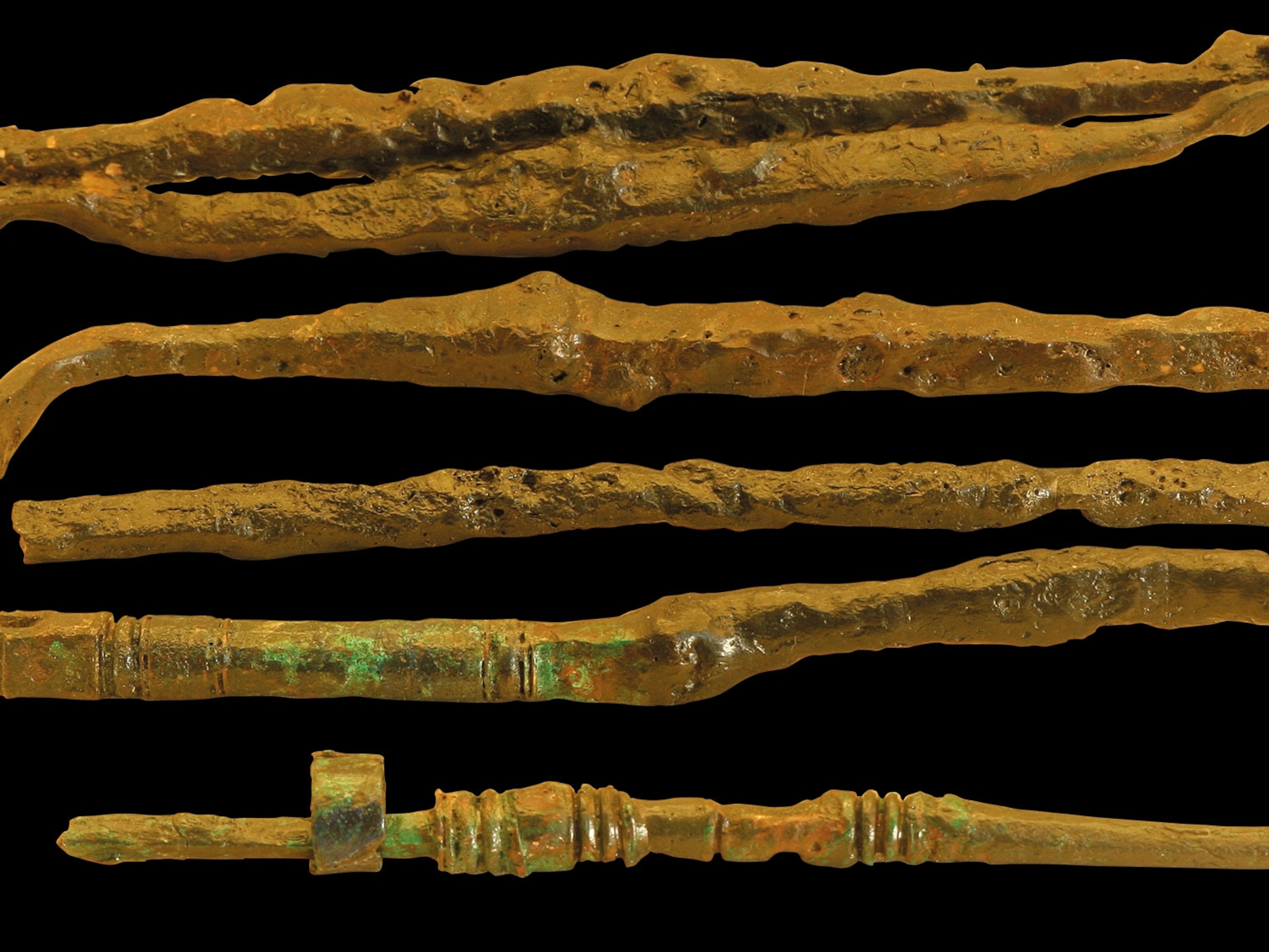
Ancient Roman IOUs Found Beneath Bloomberg's New London HQ
The earliest dated documents from Londinium highlight the city's moneyed history.
"I, Tibullus, the freedman of Venustus have written and say that I owe Gratus, the freedman of Spurius, 105 denarii from the price of merchandise which has been sold and delivered …"
This remnant of an old promissory note, written in cursive Latin on a wooden tablet originally covered with beeswax, and dated by modern reckoning to January 8, A.D. 57, is the earliest dated document yet found in Roman Britain and the first record of commercial activity conducted in what is now the financial heart of London.

It is one of an astonishing trove of 405 ancient Roman writing tablets unearthed during the construction of the new European headquarters for Bloomberg LP in the City of London. The three-acre (1.2-hectare) construction site along Queen Victoria Street rapidly grew into London’s single largest archaeological excavation of all time and exposed an entire Roman street scene from the first century A.D. that yielded thousands of exquisitely preserved personal artifacts, from leather boots and jewelry to this intriguing collection of personal correspondence, loan notes, bills of sale, and court documents, some featuring the names and addresses of the earliest Londoners. (See how London's Big Dig revealed amazing layers of history.)
Archaeologists completed their excavation work in 2014 and now, after two years of painstaking conservation and research, the Museum of London Archaeology (MOLA) has published a monograph Roman London’s First Voices, which containins translations of all 88 legible writing tablets and provides context for the early rough-and-tumble Roman frontier city of Londinium in which they were composed. (Read "London Dig Uncovers Roman-Era Skulls.")

Debt Demands and Financial Woes
"[These tablets] provide some very personal glimpses into the lives of the first Londoners," says Roger Tomlin, a retired Oxford University classics scholar who deciphered and translated the tablets and was the main author of the monograph. "Some of them are quite tantalizing."
These include an urgent appeal ("I ask you by bread and salt") by a man named Atticus who beseeches his correspondent to make payments totalling 36 denarii as quickly as possible, as well as the woes of a financier named Titus whose ill-judged loan has made him a laughingstock in the market. ("… they are boasting through the whole market that you have lent them money," his correspondent writes. "Therefore I ask you in your own interest not to appear shabby … you will not thus favor your own affairs …").


"It’s a bit like reading snippets of people’s emails," says MOLA archaeologist Sophie Jackson, who supervised the excavation of the Bloomberg site. "My personal favorite was one that reads simply: ‘You will give this to Junius, the cooper, opposite the house of Catullus …’ That’s all that was legible, but it really captured my imagination: Some wealthy man named Catullus with a big landmark house and Junius the cooper, living across the street … It’s like someone today texting to a friend: 'I’ll meet you outside the HMV store on Oxford Street.' We think of it as our city now; we forget that it was once theirs."
Every Day Records that Set History Straight
The most historically significant tablet is a contract dated October 22, A.D. 62, and concerns the transport of 20 loads of provisions from Verulamium (present-day St. Albans) to London.
"The date is important," says Tomlin, "because this is just after the Boudican revolt. The historian Tacitus, our main literary source for Roman Britain, gives a date of A.D. 61 for the rebellion and says that both London and St. Albans were destroyed at a cost of 70,000 lives."
If you like doing sudoku, you’d love doing this.Roger Tomlin, Tablet translator
"[However], it has long been argued that the events he describes must have taken place over two years, and that A.D. 60 is a more likely date for the rebellion. Since the new tablet is evidence that both towns had recovered by October A.D. 62, it supports the argument that the destruction must have taken place a year earlier than Tacitus says. It is a neat way in which a new document can be used to modify a literary account."
Many of the legible tablets that were found at the Bloomberg site are contracts or loan notes, supporting the description Tacitus gave in his Annals that early Londinium was "very full of businessmen and commerce".

Indeed, one of the structures unearthed at the site may well have been one of London’s first office buildings, dating to the end of the first century A.D. "We found 19 tablets inside that one building," says Jackson, "Although sadly none of those were legible."
Prizing Voices from Waterlogged Wood
The tablets themselves are roughly the size of a modern iPad and appear to have been made out of recycled barrel staves. A shallow depression in the center would be filled with a thin layer of soot-blackened beeswax. Writers scratched their correspondence into the wax using a needlelike iron stylus as a pen.
The tablets spent the better part of 2,000 years buried in waterlogged soil at the Bloomberg site and the original wax surfaces have long since vanished, yet faint scratches in the wood left by the writers’ styluses remain. Identifying and deciphering the scratches was no easy task: Each tablet was digitally photographed four times under different lighting angles, and the four images were then superimposed to highlight marks on the wood surface.
From there it was a matter of picking out these faint words, letters, and even parts of letters. It could take up to take a week to translate a single tablet. "If you like doing sudoku, you’d love doing this," says Tomlin, who is one of only a handful of classical scholars who can read and translate the cursive-style Latin favored by London’s earliest scribes.
"I think if I had to pick my own favourite document, it would be that acknowledgement of owed money dated January 8, A.D. 57," says Tomlin. "Not only is it the earliest dated document from Roman Britain, it was also comparatively straightforward to read. I am always very pleased when I come across one like that."
See more of Roff Smith's work at his website.








